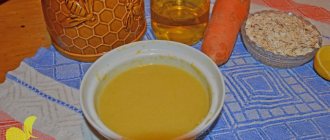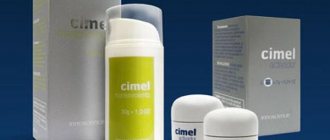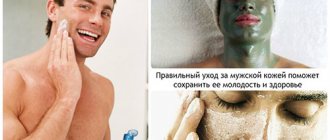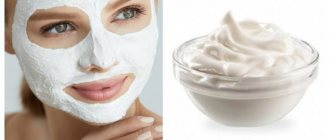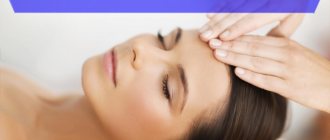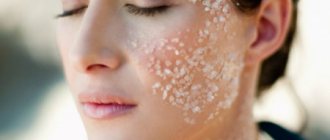What is mechanical grinding?
The main difference from diamond microderamabrasion or other minimally invasive techniques is that the top layer of the epidermis is removed from the skin of the face or any damaged area. This is done using compact cutters mounted on the device. The thickness of the skin that needs to be removed is always controlled both electronically and by the doctor. This is extremely important: if you touch a deeper layer, you can get additional damage to the treated area, instead of getting rid of the old deformation.
Mechanical dermabrasion of the face involves the removal of the uppermost layer of skin (before the beginning of the papillae) and the upper layer of the retinal dermis. This is where dead and keratinized cells are located. In order not to seriously damage the dermis, it is not recommended to reach the lower layers with cutters.
Also in the section: All types of dermabrasion
Application area
The scope of the procedure is very wide. For example, it will help with:
- pigmentation;
- deep wrinkles;
- pronounced freckles;
- scars, keloid scars, striae;
- tattoos;
- impregnation of the skin (when particles of gunpowder, coal, dust, construction chips are literally ingrained into the dermis).
How is facial microdermabrasion performed in a beauty salon?
If you want to get a guaranteed effect after a course of treatment, you must follow the recommendations of specialists. The procedure consists of several steps.
- Preparation. At this stage, it is recommended to use specific products that help soften the outer layer of the skin and make cleaning easier.
- Cleansing. Removing makeup residues using special products that prepare for the procedure.
- Grinding with microcrystals or diamond nozzles. Depending on the type and thickness of the skin, the session lasts from 20 to 40 minutes.
- Application of skin softening and soothing agents that accelerate regeneration and relieve inflammation.
The duration and number of microdermabrasion sessions depend on the specifics of the patient’s skin, as well as on the specific defects that need to be eliminated. To eliminate minor deficiencies, 5-8 procedures are enough. In any case, you should trust only professionals, whose skill and experience will allow you to carry out the necessary grinding procedure efficiently. Residents of Moscow can find such highly qualified specialists in the city.
Read material on the topic: Ozone therapy: methods, effect, reviews, photos
Deep dermabrasion for scars and keloids
But, as a rule, this rather traumatic method is used when it is necessary to remove a very noticeable scar. Scars are areas of connective tissue that form at the site of damage to the skin. Such tissue differs not only in its composition, but also in the appearance of the cells and structure. It is especially unpleasant if the wound was on the face: then the scar can rise greatly above the surface of the face or, conversely, be in the form of a depression. In such cases, only early repeated dermabrasion of the scar can help. It is simply polished in several stages, which brings the scar to the same level as the skin, evens them out in color.
Procedures of this type are performed in a course (no more than 3 operations) with a break of 7 to 10 days. It must be noted that the recovery process will be painful. Such a short period between resurfacing is due to the fact that the skin retains biosynthetic activity after surgery. She is capable of enhanced regeneration. The scar becomes less and less noticeable, it may almost disappear.
Keloids are a little more complicated. Only deep dermabrasion in combination with additional treatment methods can cope with them. To remove unaesthetic formations, you will need to go through two stages of procedures. To begin with, the patient will undergo surgical excision by deep immobilization of local tissues.
The next stage is mechanical dermabrasion to level the surface of the keloid with the skin level. The obligatory final step is Bucca irradiation to destroy the growth neck of the keloid.
Another important area of mechanical dermabrasion is working with post-burn patients. This is a difficult recovery process: regenerative cells die along with the rest of the tissue when they come into contact with fire, boiling water or steam. Secondary intention helps.
Application of dermabrasion
Dermabrasion is used to treat a variety of skin problems. This method is often used to solve problems of a purely aesthetic nature. This method allows you to restore and renew the skin, making it young and elastic. Deep peeling promotes increased production of collagen and other substances responsible for skin elasticity.
You can improve your skin condition with dermabrasion
There are different types of dermabrasion, which allows you to choose the most suitable one for a particular case. The result is usually noticeable very quickly.
What changes can be achieved with dermabrasion:
- remove scars and scars;
- eliminate stretch marks on the skin;
- remove any pigmentation on the face;
- “straighten” wrinkles of varying depths;
- reduce enlarged pores;
- restore and rejuvenate the skin;
- partially remove tattoos.
This procedure can even remove tattoos.
When and how is it best to perform mechanical dermabrasion of the face?
Special requirements of specialists relate to air temperature and time of year when the procedure is planned to be carried out:
- from April to the end of October, grinding operations are not recommended;
- You can’t do them if the sun is very active, and you won’t be able to fully hide from it. Otherwise, you can get burns, scars and severe skin hyperpigmentation;
- The ideal time is autumn or winter, when the sun is not very active. It's better to take a vacation to rest up.
Also remember that after deep grinding you cannot visit southern countries for 2 months!
Recovery process
Dermabrasion has an aggressive effect on the skin. As a result, inflammation occurs in those areas of the affected area. Inflammation and irritation of the skin can last from several days to several weeks. Bleeding may also appear in some areas. The extent of damage depends on the extent of the treated area of skin, as well as on the type of procedure.
This procedure is extremely aggressive on the skin.
A protective crust forms on the inflamed skin, which then comes off on its own. New skin remains under the crust. Its color differs from the natural color of the skin, usually it is reddish or pink. In a few days the skin will acquire a natural color.
For some time after the procedure, you must adhere to special skin care. First of all, this is protection from the sun and wind, various infections, and the use of moisturizer. The treated area of skin should not be exposed to direct sunlight to avoid burns or extensive pigmentation. Before leaving the house, you must apply sunscreen to your skin.
It is necessary to protect the skin from UV radiation
Important! During the recovery period, you should not actively engage in sports or undergo significant physical activity.
The final effect of the procedure depends on many factors. This is the initial condition of the skin, its individual characteristics, the experience of the cosmetologist, skin care after the procedure, the type of dermabrasion. It has been noticed that people with fair skin have brighter results than dark-skinned people.
The result of the procedure depends on a lot
Dermabrasion is a kind of surgical operation, so it cannot be combined with the simultaneous performance of other cosmetic procedures. Only after complete restoration of the skin of the treated area can the effect be enhanced and consolidated using other procedures. This can be laser resurfacing, chemical peeling using acids, or mesotherapy, through which nutrients and moisturizing substances are introduced under the skin.
Dermabrasion cannot be combined with other procedures
Dermabrasion at home: pros and cons
Considering the “aggressiveness” of this procedure, experts do not recommend doing dermabrasion at home. If done incorrectly, deep skin damage can occur. Therefore, such a complex procedure should be carried out by a specialist in a beauty salon or clinic.
This procedure is not recommended for use at home.
What should you do if you have to do this procedure at home? First of all, you need to consult with an experienced doctor. The doctor will help you choose the necessary medications that are needed for a particular case.
Note! Only diamond dermabrasion is suitable for home use. This does not require special devices. It is the least traumatic procedure of all types, since it cannot cause significant skin injuries or other serious consequences.
Before proceeding directly to the procedure, it is necessary to carry out a number of actions.
- Find out about the presence of contraindications.
- Assess skin condition. If there are irritations or sensitive areas, dermabrasion without the participation of a specialist is prohibited.
- Before the procedure, it is necessary to check the skin for the possibility of an allergic reaction.
- A day before the procedure, you must stop using cosmetics that contain acids.
- For the procedure, you can use only those drugs that were selected by the cosmetologist. In this case, various complications can be avoided.
Consultation with a cosmetologist is extremely important if you want to carry out the procedure at home
What actions need to be taken after the procedure?
- In the first seven days, regular use of a rich, nourishing cream will be required to restore skin balance and eliminate dryness.
- During the rehabilitation period, it is prohibited to use decorative cosmetics, visit baths and saunas, sunbathe, or swim in open reservoirs or pools.
- Before leaving the house to go outside, apply sunscreen to your skin. This is necessary even when it is raining outside and there is no sun.
Progress of the microcrystalline dermabrasion procedure
A cosmetologist removes makeup and treats the skin with an antiseptic. Then he wipes the skin dry and proceeds directly to the manipulation.
For a skin area of 1 sq. cm places the nozzle of the device, in which there is a chamber with two holes: from one, a stream of air containing microcrystals (for example, aluminum oxide/corundum) is supplied under pressure, and a vacuum is created in the other.
During the process of exposure, microcrystals hit the surface of the skin at high speed and mechanically remove epidermal cells, while the mixture of crystals and removed cells is sucked by vacuum into a special container. In this case, the effect is carried out only on the surface layers of the skin, complete or partial removal of the epidermis occurs, followed by its regeneration.
At the end of the procedure, a soothing, anti-inflammatory or moisturizing mask is applied for 15-25 minutes.
The doctor determines the number of sessions and the depth of exposure, which depends on the rate of release of microcrystals, the number of passes over the same area, and the patient’s skin type to achieve the desired result. A good lasting result can be obtained by undergoing 3-12 procedures at intervals of a week.
After the procedure (medium peeling), a cream with antibiotics is applied to the skin, and special professional products with a moisturizing, softening, regenerating effect are given for home care, as well as the mandatory use of sunscreens with SPF of at least 30.
Results and advantages of the method
Aggressive invasion provokes accelerated and enhanced regeneration processes. After the pathologically altered tissue is removed, new cells begin to grow in its place. Proliferation (reproduction) of cells of the basal layer is associated with the renewal of intercellular substance and connective tissue, the synthesis of signaling molecules that regulate the activity of cells, including the sebaceous glands, is accelerated. The renewal of the epidermis occurs faster than its exfoliation, which helps to reduce the thickness of the stratum corneum.
The anti-aging effect of the procedure is achieved by strengthening the intercellular space, where active fibroblasts form new layers of collagen and elastin. Effectiveness against scars is due to normal epithelization at the site of former fibrous growths. Pigment spots become even in tone with the rest of the skin as a result of the destruction of keratinocytes with dyschromia. The possibility of relapse of hypermalanosis is minimized, since the procedure removes melanocytes located on the basement membrane.
The benefits of dermabrasion include:
- high efficiency in relation to old and deep defects;
- an effect that can be compared in cardinality with plastic surgery, while being less traumatic and with a reduced rehabilitation period;
- painlessness during anesthesia;
- persistent effect (lasting from several years to decades).
Facial dermabrasion: photos before and after the procedure
Indications and contraindications for
Dermabarasia is recommended to remove certain defects.
INDICATIONS
- acne marks,
- scars of varying severity,
- fine and deep wrinkles,
- dyschromia;
- stretch marks (after sudden weight loss and weight gain, hormonal imbalances in the body and pregnancy);
- keloid scars;
- age spots (hypermelanosis);
- traces of unsuccessful tattoos (for example, after laser removal);
- impregnation of the epidermis (entry of foreign elements under the skin: particles of paint, coal, gunpowder).
strictly not recommended to carry out the procedure with the contraindications listed below.
CONTRAINDICATIONS
- In the presence of severe inflammatory processes on the skin. To avoid additional injury and infection, the doctor may refuse to perform dermabrasion until the epidermis has healed.
- Patients under 18 years of age.
- Pregnant women and mothers during lactation (associated with taking special medications in some cases).
- When suppuration forms.
- If the patient has an increased tendency to form keloid scars.
- For mental and somatic disorders (including epilepsy).
- For any infectious diseases (including the common cold and acute respiratory infections).
- In the event that the patient has any cancer.
- For HIV/AIDS.
- For serious blood clotting disorders.

